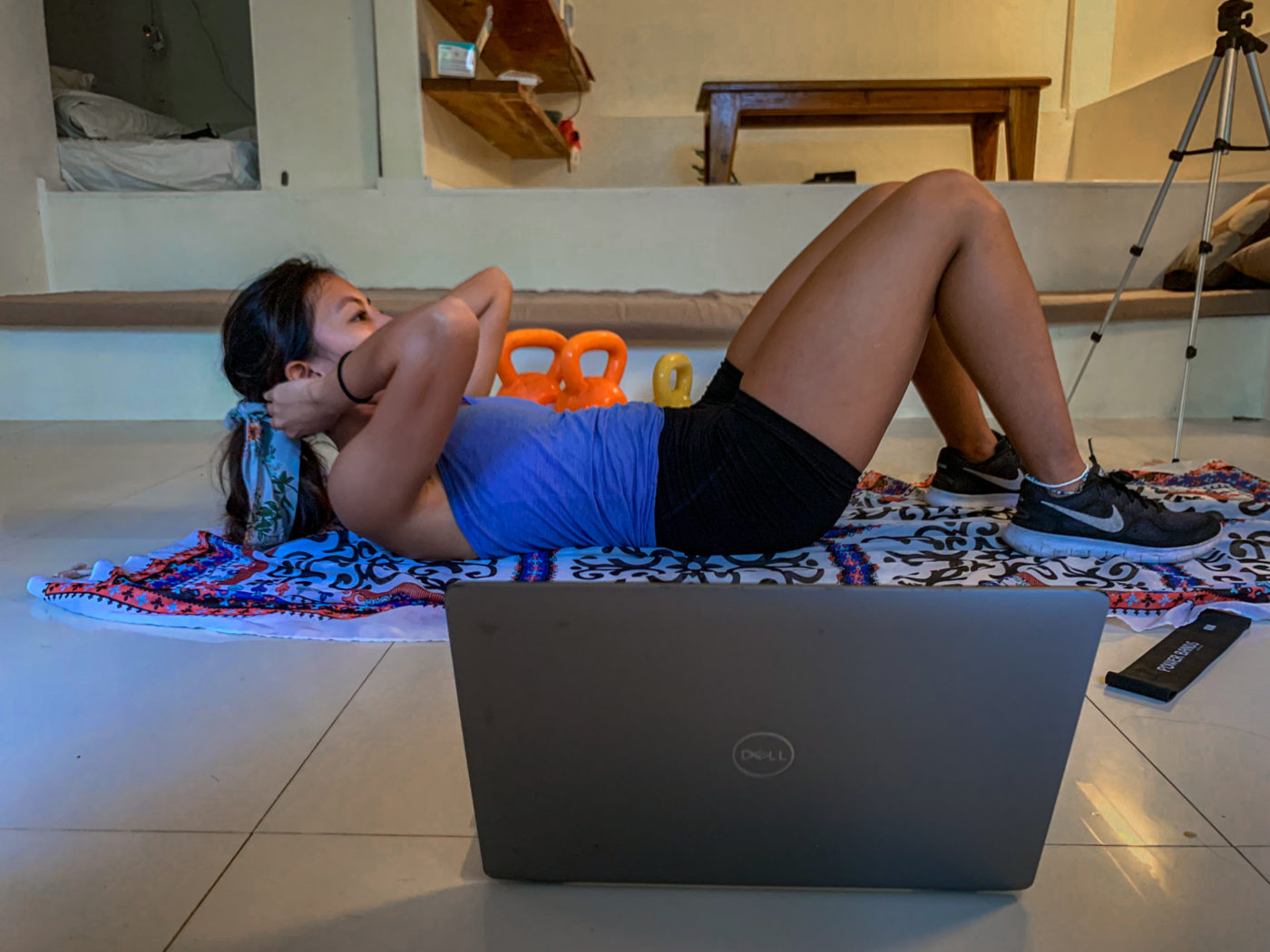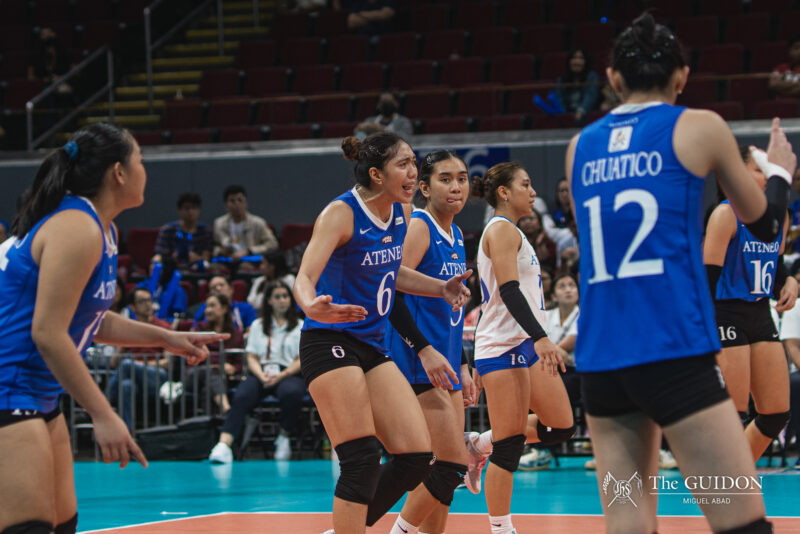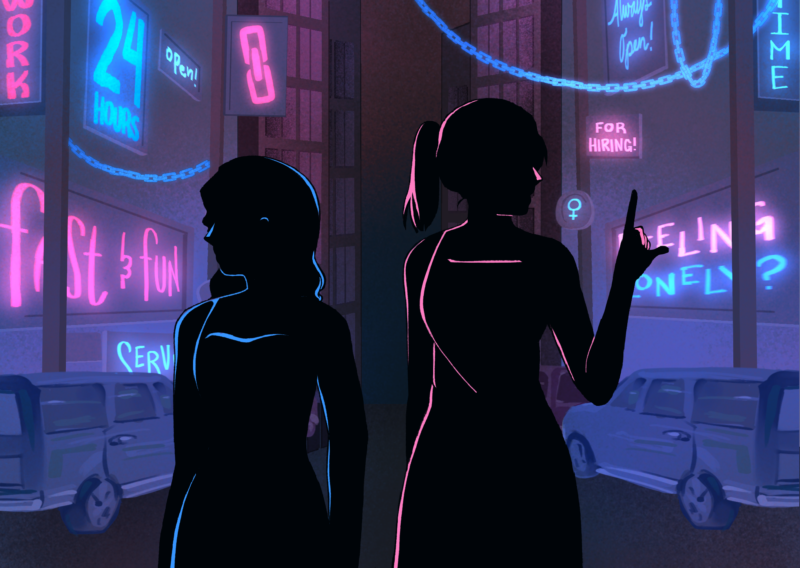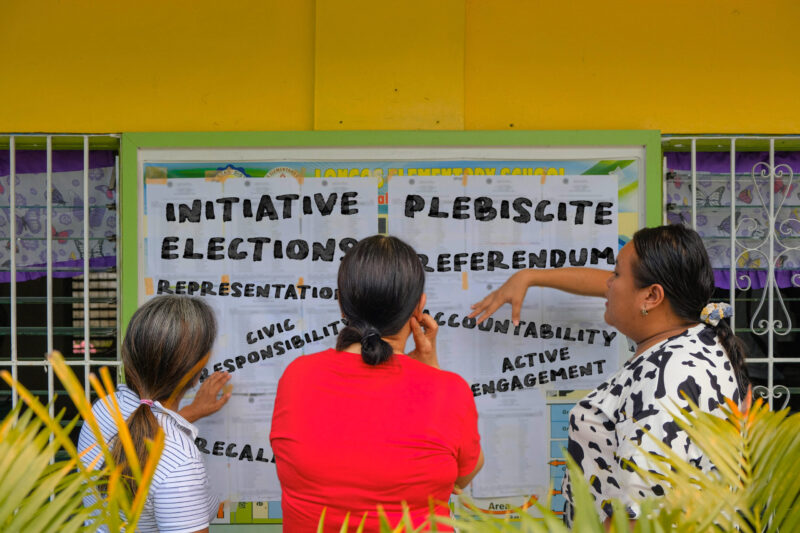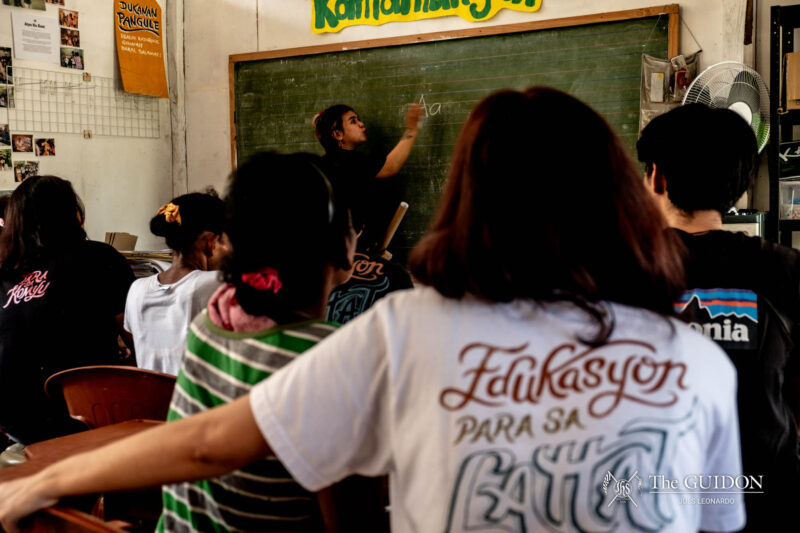UPON THE first lockdown implementation in March 2020, athletes have since shifted to online training, limiting their routines to the confines of their homes. This transition allowed Ateneo sports teams to cultivate mixed approaches to thrive in an unfamiliar environment.
The indefinite conditions brought by the pandemic also led to the cancellation of competitions, including the University Athletics Association of the Philippines (UAAP). Over a year has passed, yet the return of competitions remains uncertain—bearing weight on an athlete’s mentality and affecting their motivation to play their sport.
Before the big jump
Under normal circumstances, teams could play their sport in their respective training grounds on or off-campus. Athletes could also compete in front of a live audience, fueled by their energy to represent the Blue and White. The UAAP reminded them of the expectations they must live up to and empowered them to improve their performance by training almost daily.
Faye Dizon (3 AB IS) of the Ateneo Women’s Lawn Tennis Team (AWLTT) shared how their training was once held from Mondays to Saturdays on the in-campus tennis courts. Mondays, Wednesdays, and Fridays were for doing tennis drills on the court, while Tuesdays and Thursdays were spent at the Blue Eagle Gym for strength and conditioning. The taxing demands of daily training, however, did not stop the AWLTT from performing optimally as they had UAAP matches to look forward to.
These tournaments encouraged a stronger dynamic for teams—building open communication from their daily physical interactions. “Before, nandoon yung emotional support sa team. It’s important talaga (Before, the team had each other’s emotional support. It’s really important),” expressed Dizon.
During on-site training, coaches could also observe their athletes’ execution of plays and movements—and the training landscape has changed. AWLTT Coach Jennifer Saret points to the differences in training intensity between online and on-site.
“The intensity [of training] just varies online compared to on-site when it comes to conditioning,” shared Saret.
However, the COVID-19 pandemic has forced all teams to put their on-site training on hold, obligating them to adapt to virtual conventions. While some teams continue to strive for progress, others have set maintenance as their priority in the new normal.
Present realities
The Ateneo Women’s Track and Field Team (AWTFT) currently trains together twice a week synchronously and once a week asynchronously. Coupled with this schedule are internet connectivity problems, the lack of proper equipment, and the absence of ample space to move freely. To adjust to these issues, their coach curates training routines that can be done even without equipment, ensuring that no athlete gets left behind.
Although the AWTFT is gaining ground in this setup, Team Captain Krizia Zulueta (4 AB DS) said that competition drought made the team view training as a mere requirement rather than an opportunity for improvement.
“[Training is] really hard, I might say. First of all, you need the motivation to train, and—because we don’t have any more competitions or anything to look forward to—some of us would say that training is required na lang,” said Zulueta.
Additionally, Zulueta explained that the team’s current primary goal is to remain physically fit, which pushes them to continue training despite the challenges they encounter. Pre-pandemic, the AWTFT endured strenuous practice days through their camaraderie. Now, these team ties prove to be even more crucial as their bonds play an essential role in each other’s persistence to sustain their performance.
In contrast, the Ateneo Men’s Football Team (AMFT) proceeds with training for the UAAP like normal, with a similar schedule of asynchronous and two synchronous training sessions each week. Despite the constant struggles of early-morning training, the AMFT’s strong belief that they will soon return to the UAAP’s turf enables them to power through their trials.
For AMFT Captain Jacob Liao (4 AB MEC), the sole difference between the team’s current training routine compared to that of pre-pandemic times is that they now only focus on improving individual skill and physical strength.“Right now our [training] structure is more on the physical aspect of the game… since we can’t really do anything about the tactical side of the game,” Liao stated.
Amid these trying times, Liao only deepened his awareness of his devotion to football. “For me, it’s still number one because the pandemic really made me realize how much I love the game—how much I’m willing to give for the game, so it’s still my number one priority,” shared the center back.
Meanwhile, Zulueta opts to prioritize her studies, with track and field taking the spot as her second priority. “[Academics] is really the first thing [for myself], especially now that it’s online, which is very hard as compared to before,” she said.
With this, athletes and coaches have undergone collective mindset shifts, albeit on opposing ends of the spectrum and varying from team to team. These factors paint the inevitable change in the sports community’s culture as an understandable phenomenon.
Strong aspirations
Nonetheless, athletes persevere for excellence in their sports. Players and coaches alike are hopeful that normalcy would soon be restored in the world of collegiate athletics.
Coach Saret stresses the need for her players to maintain their skills, but also instills in their minds that they can compete again. “Mahirap i-motivate right now ‘yong parang really continue the ‘push, push, push’ kasi parang wala pa silang nakikitang if there really is UAAP or not,” expressed the former national player.
(It’s hard to motivate the athletes right now and continue the ‘push, push, push’ mentality because the return of UAAP is uncertain)
Moreover, Coach Saret clarified that this outlook would help prepare her players to restore their regular onsite routines once the UAAP returns. Similarly, Dizon believes that the current setup should not be seen as a dead end. “Kailangan mo lang talagang isiping baka may UAAP pa, hindi naman talaga katapusan ‘to eh (You just have to think that maybe there will still be UAAP. This really isn’t the end),” stated Dizon.
Zulueta, on the other hand, expresses the AWTFT’s anticipation to return to on-site training before the current seniors graduate. As track and field is an individual and non-contact sport, the team is optimistic that it can set foot on the oval anew.
Similarly, the AMFT members foster a positive mindset that they will make their comeback on the field soon. “Right now I’d say [our motivation level] is almost the same, because ‘yon nga, we’re really hopeful that there’s gonna be UAAP next year, so right now we’re all really hungry to improve,” shared Liao.
Though the future of collegiate sports is indefinite, numerous Ateneo varsity teams continue to train despite having different goals in mind. As athletes work to both maintain and improve their capabilities, they hang onto the silver lining that onsite training and tournaments would eventually reemerge in the new normal.

